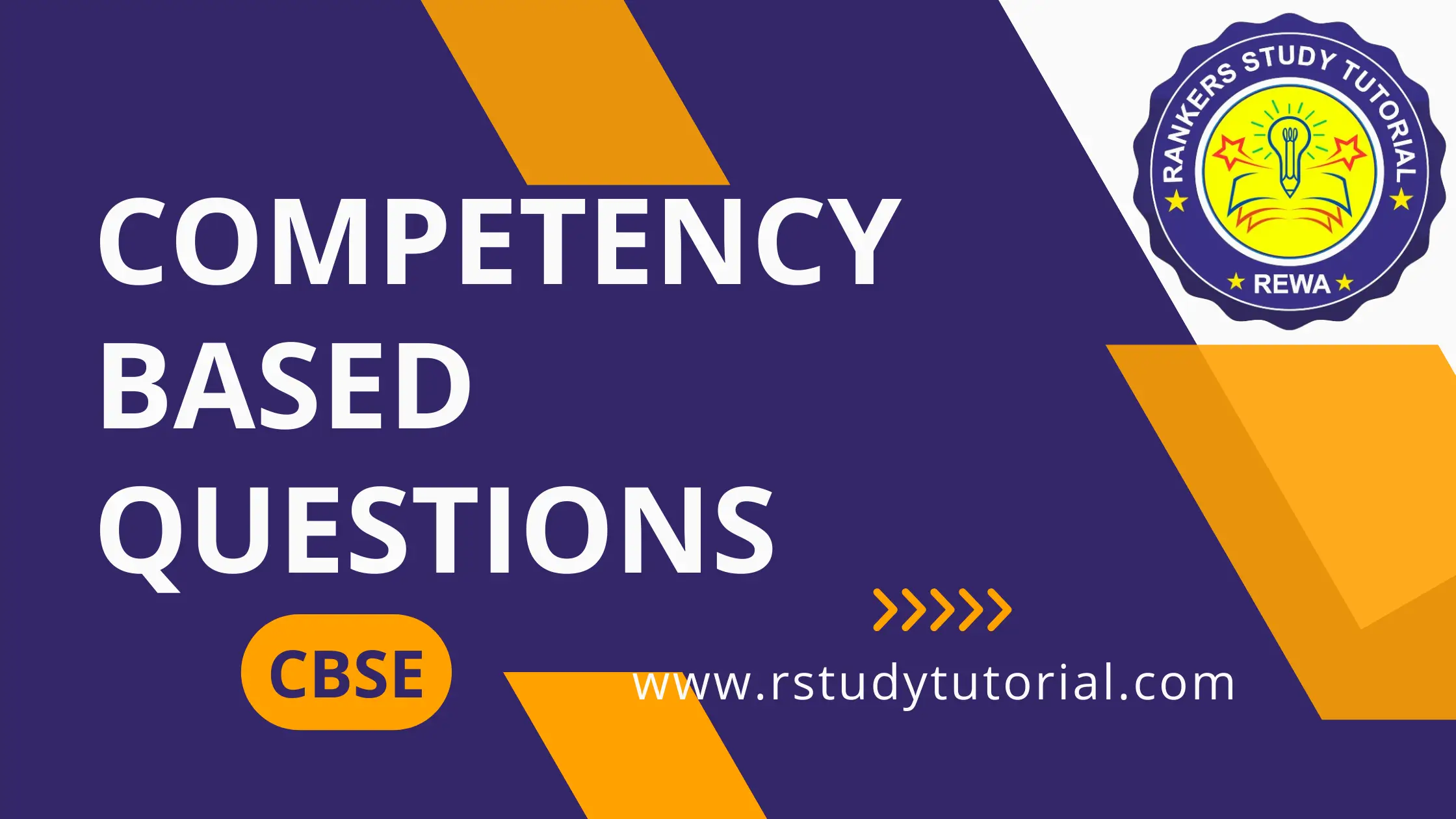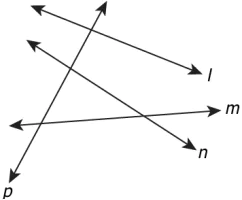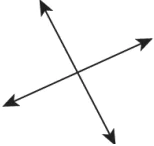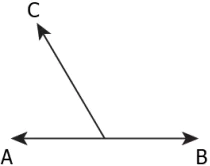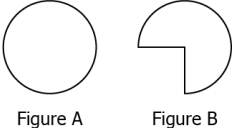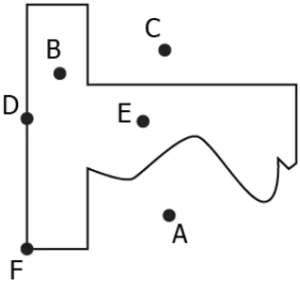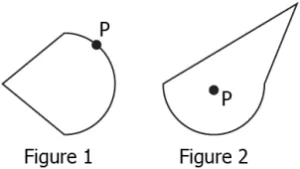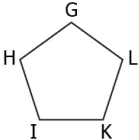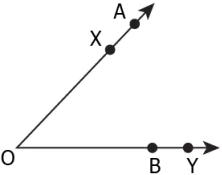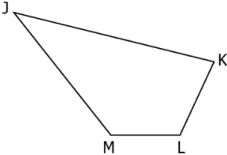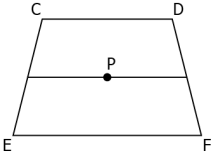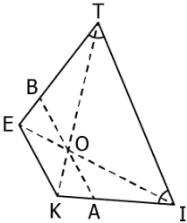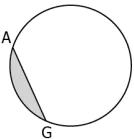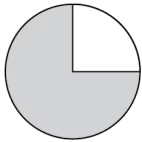Hint: Discuss and give example(s) in order to explain the importance of a point.
Question.1. Which of these cannot be represented by a point?
(a) Tip of the needle
(b) A vertex of a triangle
(c) Tip of pen
(d) Length of a box
Question.2. A point determines the ________ on a map.
(a) location of a place
(b) distance between two places
(c) direction
(d) roads
Ans.1. (d) Length of a box
Ans.2. (a) location of a place
Hint: Give example(s) in order to describe a line segment.
Question.3. Which of these represents a line segment?
(a) Cap of a bottle
(b) A bead
(c) Tip of a compass
(d) A needle
Question.4. Consider the two statements about the distance between two points.
Statement 1: It is represented by a line segment because it measures the length between the starting and end points.
Statement 2: It is represented by a line because it measures the length between the starting and end points.
Which of the above statement(s) is/are correct?
(a) Only statement 2
(b) Both statements 1 and 2
(c) Only statement 1
(d) Neither statement 1 nor statement
Ans.3. (d) A needle
Ans.4. (c) Only statement 1
Hint: Give example(s) in order to describe a line.
Question.5. Which of these can be represented by a line?
(a) Window blinds
(b) Roads
(c) Ruler
(d) Spacebar on keyboard
Question.6. Electric wire is represented by a ________.
(a) line segment because it starts and ends on the same point.
(b) line because it starts and ends on the same point.
(c) line because it can extend indefinitely in both directions.
(d) line segment because it has no starting and end point.
Ans.5. (b) Roads
Ans.6. (c) line because it can extend indefinitely in both directions.
Hint: Examine the given lines in order to identify intersecting lines among them.
Question.7. Consider the line segments shown.
(a) Figure 1; because lines have no point in common
(b) Figure 1; because lines have point O in common
(c) Figure 2; because lines have point D in common
(d) Figure 2; because lines have no point in common
Question.8. Which pair of lines in the following figure are not intersecting with each other in the figure shown?
(a) m and n
(b) m and p
(c) l and p
(d) l and n
Ans.7. (b) Figure 1; because lines have point O in common
Ans.8. (d) l and n
Hint: Examine the given lines in order to identify parallel lines among them.
Question.9. Which of these shows parallel lines?
(a) 
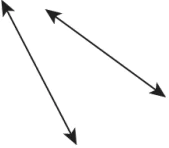
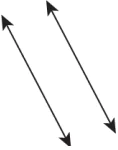
Question.10. A student drew a pair of lines as shown.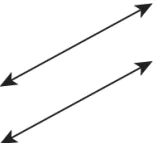
(a) intersecting lines because they will never intersect each other
(b) parallel lines because they will never intersect each other
(c) intersecting lines because they intersect each other
(d) parallel lines because they intersect each other
Ans.9. (c) 
Hint: Describe a ray in order to identify it from the given figures.
Question.11. Which of these represents AB as a ray?
(a) 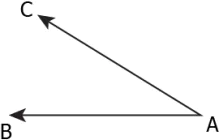
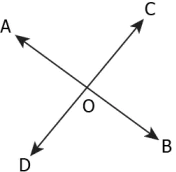

Question.12. Consider the figure shown.Which of these is true about the given figure and why?
(a) \overline{BD} represents a line segment because it has only one end point.
(b) \overleftrightarrow{AC} represents a line because it has two end points.
(c) \overrightarrow{BC} represents a ray because it has only one end point.
(d) \overleftrightarrow{AD} represents a line because it has two end points.
Ans.11. (a) 
Hint: Compare the given figures in order to identify a ray, line, line segment among them.
Question.13. Observe the figure below.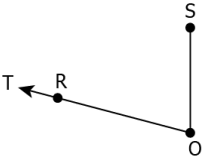
(a) OT denotes a ray.
(b) TO denotes a ray.
(c) OS denotes a line segment.
(d) SO denotes a line segment.
Question.14. Which statement(s) is/are correct about the figure shown below?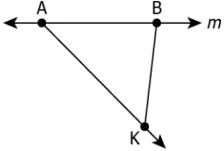
Statement 2: Both AK and BK are rays.
(a) Only statement 1
(b) Only statement 2
(c) Both statements 1 & 2
(d) Neither statement 1 nor statement 2
Ans.13. (b) TO denotes a ray.
Ans.14. (a) Only statement 1
Hint: Give example(s) in order to demonstrate an understanding of a simple curve and a curve that is not simple.
Question.15. In which of the following options, both figures are simple curves?
(a) 


Question.16. Which of the following statements is true about the two figures shown below?
(a) Both figures A and B are simple curves because neither crosses itself.
(b) Both figures A and B are simple curves because their end points meet.
(c) Only figure A is a simple curve because it is not made up of any line segment.
(d) Only figure B is a simple curve because it is made up of at least one line segment.
Ans.15. (a) 
Hint: Describe an open curve and a closed curve in order to distinguish between the two.
Question.17. Consider the figure shown.
(a) It is a simple open curve.
(b) It is a simple closed curve.
(c) It is not a simple curve.
(d) It is not a curve.
Question.18. A student drew a closed curve that is made up of at least three line segments. Which of these can’t be the curve that the student drew?
(a) 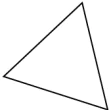
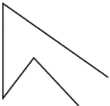
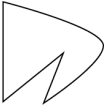
Ans.17. (b) It is a simple closed curve.
Ans.18. (b)
Hint: Discuss the parts of a closed curve in order to determine the position of a point with respect to it.
Question.19. Which points lie inside the curve shown below?
(a) Points A and C
(b) Points B and E
(c) Points B, D, E and F
(d) Points A, C, D and F
Question.20. In which of the following figures, the point P lies in the region of the curve?
(a) Only in figure 1
(b) Only in figure 2
(c) In both figures 1 and 2
(d) Neither in figure 1 nor in figure 2
Ans.19. (b) Points B and E
Ans.20. (c) In both figures 1 and 2
Hint: Examine the given curves in order to identify polygons and non-polygons.
Question.21. What is the minimum number of sides a polygon can have?
(a) 1
(b) 2
(c) 3
(d) 4
Question.22. Which of the following is true about the figure shown below?
(a) Only figure A is a polygon.
(b) Only figure B is a polygon.
(c) Both figures A and B are polygons.
(d) Neither figure A nor figure B is a polygon.
Ans.21. (c) 3
Ans.22. (d) Neither figure A nor figure B is a polygon.
Hint: Draw rough sketch of a polygon in order to label and describe its elements.
Question.23. A student drew a polygon PQRST with 5 sides. Which option shows the sides adjacent to the side ST?
(a) PT and RS
(b) PT and PQ
(c) RS and QR
(d) PQ and QR
Question.24. Of the two diagonals of a polygon, one is GK. Which of these can be the polygon?
(a) 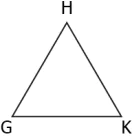
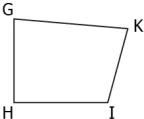
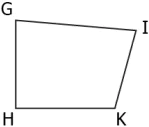
Ans.23. (a) PT and RS
Ans.24. (c)
Hint: Discuss the elements of an Angle: Vertex, arm, interior and exterior in order to identify it for the given angles.
Question.25. What is the vertex in the figure shown?
(a) Point O
(b) Point A
(c) Point X
(d) Both points A and Y
Question.26. An ∠XYZ is made such that a point D is on the angle but not at vertex. Which of these can also be the name of the \angleXYZ?
(a) \angleDXY
(b) \angleDXZ
(c) \angleXYD
(d) \angleXDZ
Ans.25. (a) Point O
Ans.26. (c) \angleXYD
Hint: Give example(s) in order to name an angle in the given figure.
Question.27. Observe the figure below: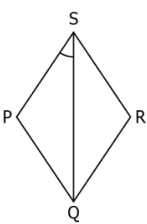
(a) \angleS
(b) \anglePSR
(c) \anglePSQ
(d) \angleQSR
Question.28. Which of the following statements is correct about the figure below?
(a) An acute angle formed with J as vertex is \angleJKM.
(b) An obtuse angle formed with M as vertex is \angleJML.
(c) An obtuse angle formed with L as vertex is \angleLMK.
(d) An acute angle formed with K as vertex is \angleKLM.
Ans.27. (c) \anglePSQ
Ans.28. (b) An obtuse angle formed with M as vertex is \angleJML.
Hint: Describe the elements of a triangle in order to identify it among the given figures.
Question.29. In a triangle XYZ, point J is in the exterior and point K is in the interior. Which of these shows the triangle XYZ?
(a) 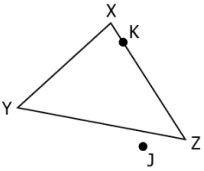
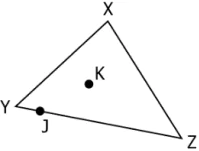
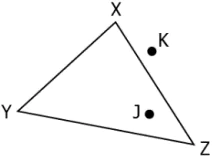
Question.30. Lalit constructs a figure such that it consists of two triangles.
- Point P is on both the triangles
- There is a total of 8 angles.
Which of these figures could Lalit have constructed?
(a) 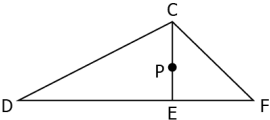
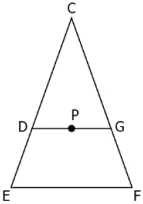
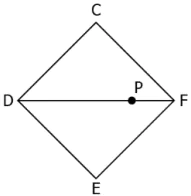
Ans.29. (d) 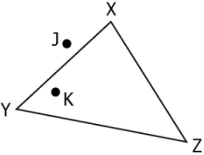
Hint: Describe the elements of a quadrilateral in order to identify it among the given figures.
Question.31. In a quadrilateral, Ritika draws its diagonals that intersect at point O. Which of these could she have drawn?
(a) 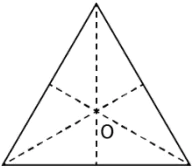
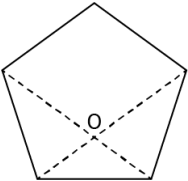
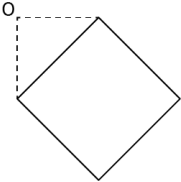
Question.32. A student draws a quadrilateral with the following description:
- Points A and B are marked on the pair of opposite sides ET and KI respectively.
- \angleT and \angleI are adjacent angles.
- The intersection of line AB and diagonals intersect at point O.
Which of the following quadrilaterals did the student draw?
(a) 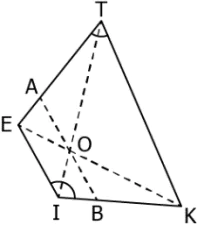
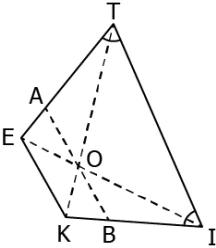
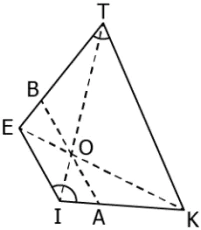
Ans.31. (d) 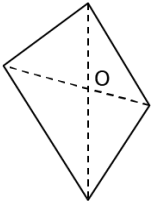
Hint: Describe the parts of a circle in order to identify them in the given circle.
Question.33. Observe the figure below: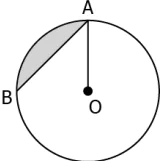
(a) Chord AB and the shaded region represents the segment.
(b) OA is the diameter of the circle.
(c) The circle is centred at point A.
(d) AB is the radius of the circle.
Question.34. Observe a circle with centre O.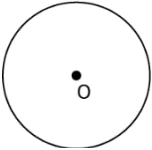
(a) Half part of the circle represents both the sector and segment of the circle.
(b) The distance from the centre of a circle to its boundary is always equal.
(c) The diameter of the circle is always a chord of the circle.
(d) A circle can have only two diameters.
Ans.33. (a) Chord AB and the shaded region represents the segment.
Ans.34. (d) A circle can have only two diameters.
Hint: Draw a rough sketch of a circle in order to label and describe its elements.
Question.35. Which of these is a circle showing a sector and a chord AG?
(a) 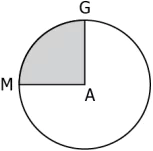
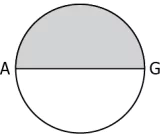
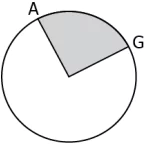
Question.36. A student draws a figure with the end points of the diameter as part of the boundary. In the figure, the diameter and the chord are the same and the area inside the boundary represents both the sector and segment. Which of these figures could the student have drawn?
(a) 
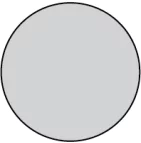
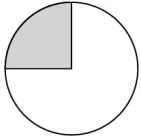
Ans.35. (b) 
Hint: Determine the parts of closed curves in order to identify the position of a point with respect to a polygon and a circle.
Question.37. Consider a circle shown.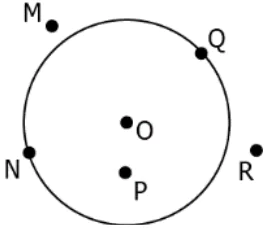
(a) Points M and R
(b) Points N and Q
(c) Points O and P
(d) Points N, P and Q
Question.38. Consider a figure shown.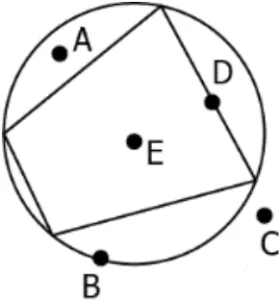
(a) Points A, D and E lie in the interior of the polygon.
(b) Points A, B and C lie in the exterior of the polygon.
(c) Points A, B, D and E lie in the interior of the circle.
(d) Points B and C lie in the exterior of the circle.
Ans.37. (c) Points O and P
Ans.38. (b) Points A, B and C lie in the exterior of the polygon.

